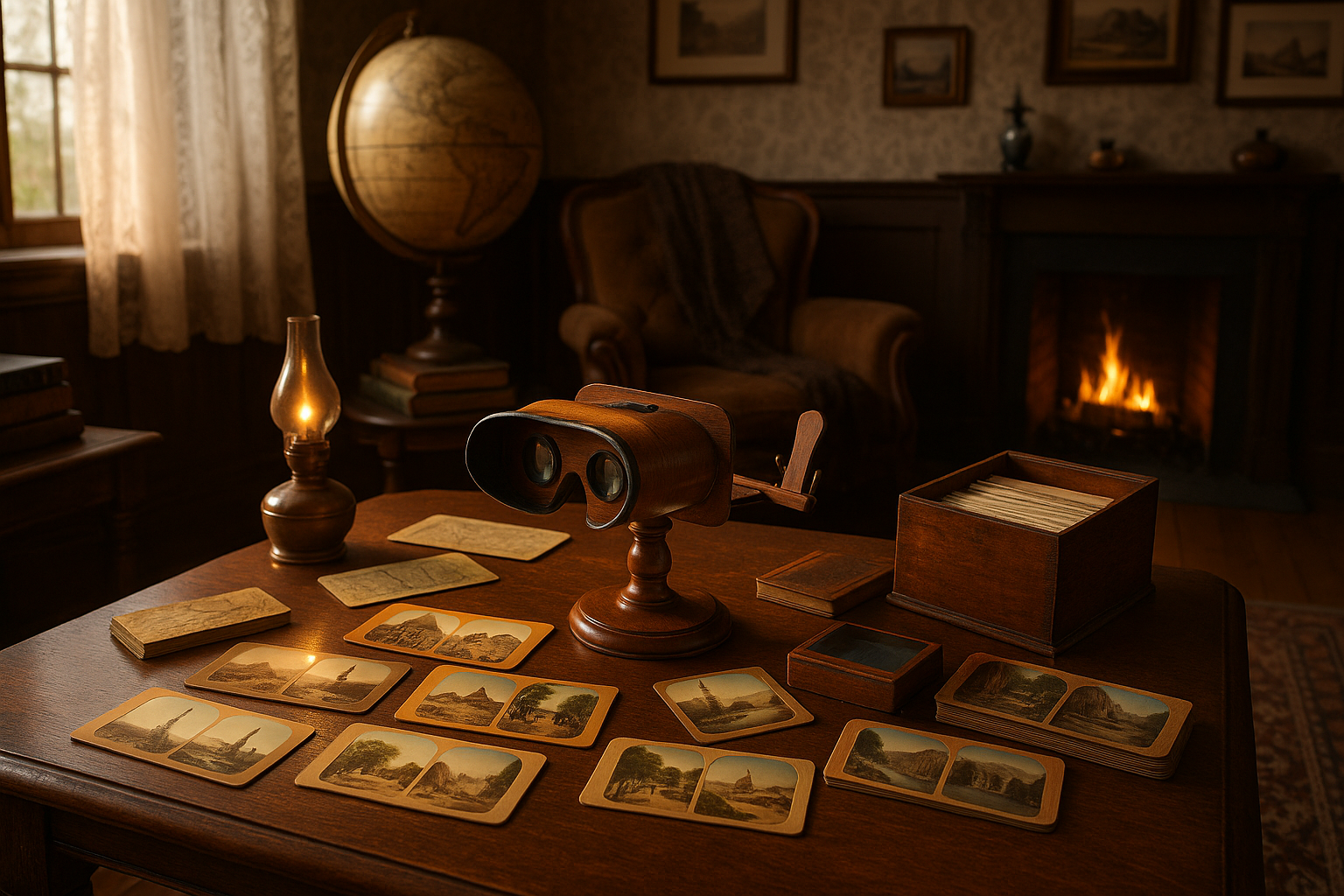In a world where the smallest details can transform the ordinary into the extraordinary, the art of crafting perfectly polished glass spheres stands as a testament to human ingenuity and artistic finesse. These sparkling spheres, often seen as simple decorative items, are in fact the result of a meticulous process that combines science, craftsmanship, and a touch of magic. Whether used in interior design, art installations, or as unique gifts, their allure is undeniable. But what really goes into creating these captivating objects? Prepare to embark on a journey that unveils the secrets behind the creation of flawlessly polished glass spheres, where each step of the process is a blend of tradition and innovation. ✨
At first glance, a glass sphere might seem like a straightforward object, yet its creation involves a complex interplay of raw materials, precision techniques, and artistic vision. The journey begins with the selection of the highest quality glass, which serves as the foundation for the sphere’s clarity and brilliance. From there, the transformation from a simple piece of glass into a stunning, smooth sphere involves a series of meticulous steps: melting, shaping, cooling, and polishing. Each phase requires the skilled hand of a craftsman who understands the delicate balance between form and function. As we delve into this topic, you’ll discover how these artisans achieve the perfect equilibrium between transparency and reflection, making each sphere a miniature masterpiece.
The process is not just about technical precision; it’s also about an appreciation for the artistry involved in glassmaking. As we explore the techniques used to achieve the impeccable finish of these spheres, we’ll also uncover the historical context and cultural significance that glassmaking holds across different civilizations. From ancient Egypt to modern-day studios, the evolution of glass sphere creation tells a story of innovation and creativity that spans centuries. In this article, we’ll traverse through time, examining how past techniques influence contemporary practices, and how today’s artisans are pushing boundaries to create ever-more stunning glass spheres. 🌍
Furthermore, we’ll delve into the practical applications and aesthetic appeal of these spheres. Whether suspended in a modern art gallery or adorning the living room of a contemporary home, their versatility and beauty make them a favorite among designers and collectors alike. We’ll discuss the various ways in which these spheres can be used to enhance spaces, create ambiance, and serve as conversation starters. So, if you’ve ever been captivated by the ethereal glow of a glass sphere catching the light, or if you’re curious about the craft behind these dazzling objects, this exploration will enlighten and inspire. Get ready to see glass spheres not just as decorative pieces, but as the remarkable products of skill, tradition, and creativity. 🌟
## Understanding the Allure of Sparkling Glass Spheres
Glass spheres, often celebrated for their sparkling beauty and elegant simplicity, have been a subject of fascination for centuries. From their origins in ancient craftsmanship to modern decorative uses, these objects are more than mere ornaments; they are a testament to human ingenuity and artistry. This article delves into the intricate process of creating perfectly polished glass balls and the secrets that lie within their captivating allure.
### The History and Artistry of Glass Spheres
The history of glassmaking is a story of innovation and artistic expression. The process dates back to ancient civilizations, where artisans mastered the techniques of blowing and shaping glass into various forms, including spheres. These objects were not only valued for their aesthetic appeal but also served as symbols of wealth and status.
Today, the art of glassmaking has evolved, incorporating new technologies and techniques that enhance the quality and beauty of glass spheres. The allure of these objects lies in their perfect symmetry, smooth surface, and the way they capture and reflect light. To achieve this level of perfection, artisans employ a combination of traditional methods and modern innovations.
#### The Craft of Glass Blowing
The process of creating glass spheres begins with glass blowing, a technique that involves inflating molten glass into a bubble. This is achieved by blowing air through a tube into the heated glass, which is then shaped and formed into a sphere. The skill and precision required in this process are extraordinary, as artisans must carefully control the temperature and pressure to achieve the desired shape and size.
Once the initial shape is formed, the glass sphere undergoes a series of refinements to enhance its clarity and brilliance. This involves cutting, grinding, and polishing the surface to remove any imperfections and achieve a flawless finish.
### The Science Behind Perfectly Polished Glass Balls
The creation of perfectly polished glass spheres is not just an art; it is also a science. Understanding the properties of glass and the techniques used to manipulate it is crucial to achieving the desired results.
#### The Properties of Glass
Glass is a unique material with distinct properties that make it ideal for creating spheres. It is transparent, allowing light to pass through it, and it can be molded into various shapes when heated. The chemical composition of glass, which includes silica, soda ash, and lime, determines its clarity and durability.
To enhance the sparkle and luster of glass spheres, manufacturers often add additional materials, such as lead or borosilicate, to the glass mixture. These additives increase the refractive index of the glass, resulting in greater brilliance and sparkle.
#### Techniques for Achieving a Perfect Polish
The polishing process is a critical step in the creation of glass spheres. It involves grinding the surface with increasingly finer abrasives to smooth out any roughness and achieve a mirror-like finish. This process requires precision and patience, as even the smallest imperfection can affect the overall appearance of the sphere.
Modern techniques, such as chemical polishing and laser cutting, have revolutionized the way glass spheres are finished. These methods offer greater precision and consistency, allowing manufacturers to produce spheres with unparalleled clarity and brilliance.
### The Role of Technology in Enhancing Glass Spheres
Technology plays a significant role in the production of glass spheres. From advanced machinery that automates the shaping and polishing processes to computer software that designs intricate patterns and engravings, technology has expanded the possibilities of what can be achieved with glass.
#### Automation and Precision Engineering
The use of automated machinery has greatly increased the efficiency and precision of glass sphere production. Machines can now perform tasks that were once labor-intensive, such as cutting and shaping, with remarkable accuracy. This not only improves the quality of the final product but also reduces the time and cost involved in production.
Precision engineering is another technological advancement that has transformed the creation of glass spheres. This involves the use of computer-controlled machines to achieve precise dimensions and intricate designs. These machines can produce spheres with a level of detail and accuracy that would be impossible to achieve by hand.
#### Innovations in Design and Customization
Technology has also opened up new possibilities for customization and design. With the help of computer software, manufacturers can create detailed patterns and engravings on the surface of glass spheres. This allows for a high degree of personalization, making each sphere unique.
Moreover, advancements in 3D printing technology have enabled the creation of complex and intricate designs that were previously unimaginable. This technology allows for the production of custom glass spheres with intricate patterns and shapes, offering endless possibilities for creativity and expression.
### The Uses and Significance of Glass Spheres in Modern Times
While glass spheres have been valued for their beauty and artistry for centuries, they also have practical applications in modern times. These objects are used in various industries, from decoration to scientific research, and their significance continues to grow.
#### Decorative and Artistic Applications
In the world of interior design, glass spheres are used as decorative elements that add elegance and sophistication to any space. Their reflective surfaces and sparkling appearance make them ideal for use in chandeliers, table centerpieces, and other decorative installations.
Artists also use glass spheres as a medium for creative expression. The versatility of glass allows for a wide range of artistic possibilities, from abstract sculptures to intricate engravings. The transparency and refractive properties of glass make it an ideal material for exploring themes of light and perception.
### Table: Comparison of Traditional and Modern Glassmaking Techniques
| Aspect | Traditional Techniques | Modern Techniques |
|---|---|---|
| Shaping | Manual blowing and shaping | Automated machinery and precision engineering |
| Polishing | Hand grinding and polishing | Chemical polishing and laser cutting |
| Customization | Limited to manual engraving | Advanced computer software and 3D printing |
#### Scientific and Industrial Applications
Beyond their aesthetic appeal, glass spheres are used in various scientific and industrial applications. In the field of optics, for example, glass spheres are used as lenses and prisms that manipulate light for various purposes. Their precision and clarity make them ideal for use in telescopes, microscopes, and other optical instruments.
In industry, glass spheres are used as beads in manufacturing processes. They serve as abrasive materials in blasting operations and as fillers in products like paint and plastics. The uniformity and durability of glass spheres make them ideal for these applications.
#### Environmental and Sustainable Practices
As the demand for glass products continues to grow, manufacturers are increasingly focusing on sustainable practices to minimize their environmental impact. This includes the use of recycled materials, energy-efficient production methods, and waste reduction initiatives.
Many manufacturers are also exploring the use of alternative materials, such as bioglass, which is made from natural and renewable sources. This not only reduces the environmental footprint of glass production but also creates new opportunities for innovation and creativity.
### Video: The Art of Glass Blowing and Polishing
To gain a deeper understanding of the intricate process of glass sphere creation, watch this informative video: Glass Blowing Techniques and Tips by the channel “Glass Artistry”.
### Conclusion
In conclusion, the journey through the intricate world of creating perfectly polished glass balls, as explored in “Sparkling Spheres: The Secret to Perfectly Polished Glass Balls Revealed!”, unveils a fascinating blend of art, science, and meticulous craftsmanship. Throughout this article, we have delved into the rich history of glassmaking, tracing its evolution from ancient techniques to modern innovations. We have also examined the precise steps involved in crafting these mesmerizing spheres, highlighting the significance of each phase from selecting the right type of glass to the final polishing process.
One of the primary takeaways from this exploration is the extraordinary level of detail and precision required to produce glass balls that are not only aesthetically pleasing but also structurally sound. The process begins with the careful selection of raw materials, emphasizing the purity and quality of the glass used. This foundational step is crucial as it sets the stage for the entire crafting process. The subsequent stages involve a series of heating, shaping, and cooling techniques that demand both skill and patience. The final polishing phase, often involving the use of specialized abrasives and polishing compounds, is where the true artistry shines through, transforming a simple piece of glass into a captivating object of beauty.
Moreover, we have discussed the various applications of polished glass balls, ranging from decorative pieces in homes and gardens to functional components in scientific instruments and optical devices. This versatility underscores the importance of maintaining high standards of craftsmanship to ensure that each glass ball meets the desired specifications and quality benchmarks.
The article also sheds light on the technological advancements that have revolutionized the glassmaking industry. Innovations in equipment and materials have not only enhanced the efficiency of the production process but also expanded the creative possibilities for artisans and manufacturers alike. The integration of computer-aided design (CAD) and automated machinery has allowed for greater precision and consistency, making it possible to produce glass balls with intricate designs and flawless finishes.
In reinforcing the importance of this topic, it is crucial to acknowledge the role of skilled artisans and craftsmen who, despite the advent of technology, continue to play a pivotal role in the creation of these elegant objects. Their expertise, honed through years of practice and dedication, remains irreplaceable. The delicate balance between human touch and technological innovation is what makes the production of glass balls a unique and enduring art form.
As you reflect on the insights shared in this article, consider the broader implications of supporting and preserving traditional craftsmanship in an increasingly automated world. The art of glassmaking is not merely about creating beautiful objects; it is about preserving a rich cultural heritage that has been passed down through generations. By appreciating and valuing these skills, we contribute to the continuation and evolution of this time-honored craft.
We encourage you, our readers, to delve deeper into the world of glassmaking by exploring additional resources and perhaps even trying your hand at creating your own glass art. There are numerous workshops and online platforms that offer courses and tutorials for beginners and enthusiasts alike. Engaging with this art form can provide a newfound appreciation for the intricacies involved and the satisfaction of creating something truly unique.
If you found this article insightful, please feel free to share it with friends, family, or anyone who might be intrigued by the magic of glassmaking. Sharing knowledge not only enriches our understanding but also fosters a community of like-minded individuals who value art, craftsmanship, and innovation.
For further reading, you may want to explore Corning Museum of Glass for comprehensive resources on glass history and techniques, or visit Glass Art Society for information on workshops and artist showcases.
In closing, let this exploration of perfectly polished glass balls serve as a reminder of the beauty that can be achieved through dedication, skill, and innovation. Whether you are an artisan, a collector, or simply a curious reader, may you continue to be inspired by the wonders of glass and the countless possibilities it holds. 🌟
Thank you for joining us on this journey. We look forward to hearing your thoughts and experiences, so please leave a comment below. Let’s keep the conversation and inspiration flowing!

Toni Santos is a visual historian and artisan whose creative lens is captivated by the forgotten marvels of antique optical devices. Through his thoughtful storytelling, Toni revives the instruments that once transformed light into wonder—camera obscuras, magic lanterns, kaleidoscopes, and other ingenious tools that shaped our earliest visual imaginations.
His journey is rooted in a fascination with how humans have long sought to bend, reflect, and reveal the unseen. Whether tracing the mechanical poetry of 19th-century projectors or illustrating the tactile elegance of early lenses, Toni’s work invites us to see vision itself as an evolving art form.
Blending handcrafted design with historical inquiry, Toni brings to life the material soul of these devices—celebrating not just how they functioned, but what they meant. His creations and curated stories illuminate a world where science, illusion, and beauty were intricately linked through glass and brass.
As the curator of Vizovex, Toni shares detailed studies, reconstructed artifacts, and immersive content that help others rediscover the origins of visual technology and the magic of analog perception.
His work is a tribute to:
The craftsmanship behind early visual instruments
The wonder of seeing through the eyes of another century
The intersection of optics, art, and imagination
Whether you’re a collector, a designer, or someone drawn to the lost poetry of vision, Toni welcomes you into a world where light is a storyteller—one prism, one lens, one forgotten invention at a time.





